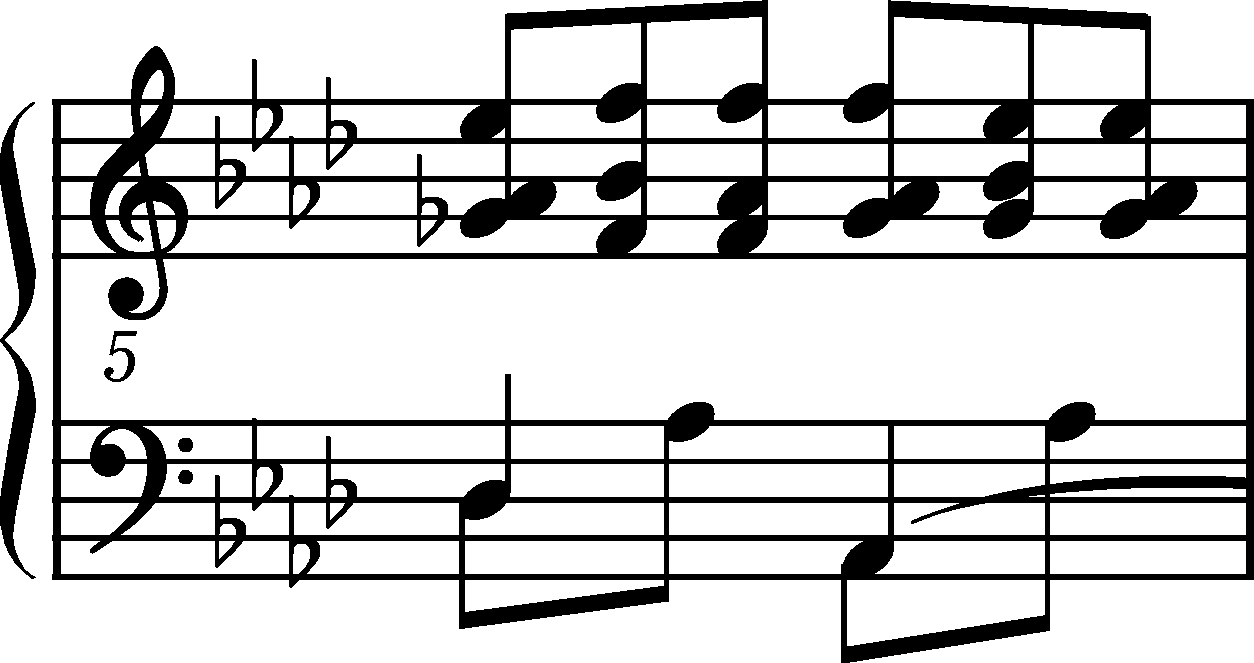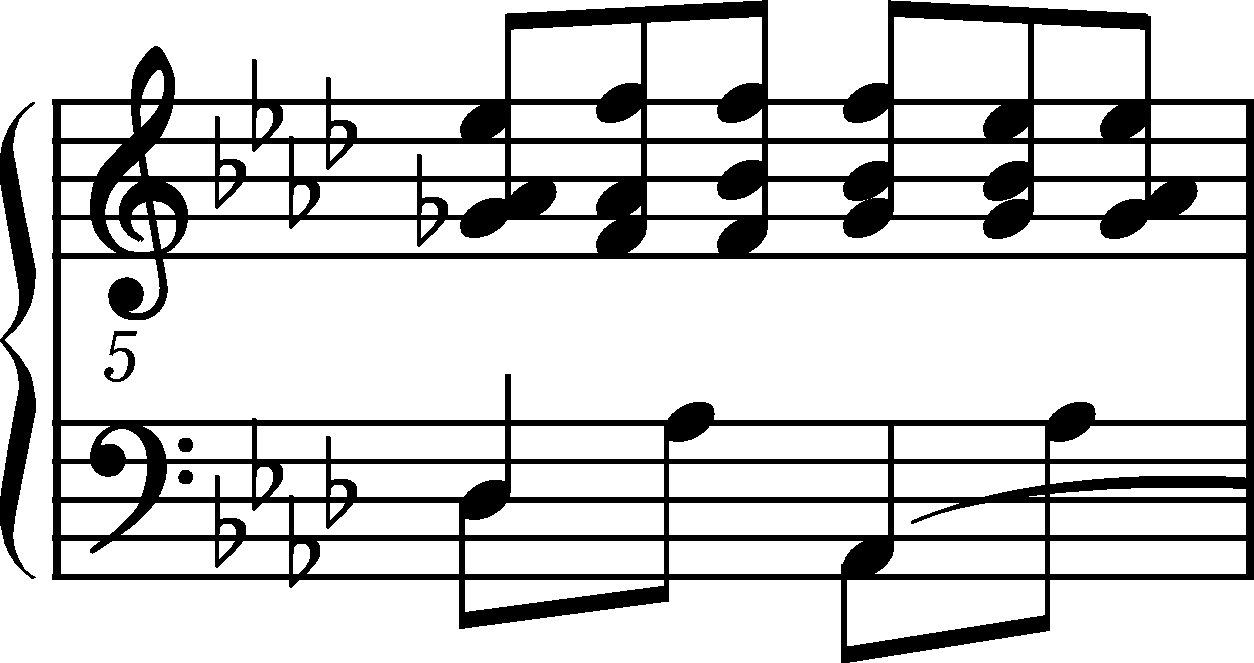



The GE text (→FE,EE,IE) corresponds to the version used by Chopin in analogous bar 312. The reviser could have intervened because of the parallel fifths present in the A version, e -b
-b – f-c1, sonically emphasised by the second fifth played on the 3rd quaver as the only interval (excluding the tied notes). The version in bar 312 is undoubtedly more artful (harmonically speaking), and it cannot be ruled out that Chopin would have introduced it also here if he had continued working on the piece. However, it is only an assumption, as Chopin did not make any corrections after handing over A to Haslinger, and – judging from his letters (see the letter quoted in the description of GE1 in mov. I of the Sonata) – did not want to make them. Taking into account the fact that the indicated defects of the A version influence the perception of this phrase to a negligible extent, not to mention the entire piece, in the main text we leave the only authentic version of this place. The version of the editions, based on the authentic and probably later text of an analogous phrase can be considered an acceptable variant.
– f-c1, sonically emphasised by the second fifth played on the 3rd quaver as the only interval (excluding the tied notes). The version in bar 312 is undoubtedly more artful (harmonically speaking), and it cannot be ruled out that Chopin would have introduced it also here if he had continued working on the piece. However, it is only an assumption, as Chopin did not make any corrections after handing over A to Haslinger, and – judging from his letters (see the letter quoted in the description of GE1 in mov. I of the Sonata) – did not want to make them. Taking into account the fact that the indicated defects of the A version influence the perception of this phrase to a negligible extent, not to mention the entire piece, in the main text we leave the only authentic version of this place. The version of the editions, based on the authentic and probably later text of an analogous phrase can be considered an acceptable variant.
An interesting parallel to the discussed situation can be found in the Etude in A , the second out of the three etudes written for the "Méthode des Méthodes", Dbop. 36 No. 2. In the autograph and the first edition of the Etude, bar 5 looks as follows:
, the second out of the three etudes written for the "Méthode des Méthodes", Dbop. 36 No. 2. In the autograph and the first edition of the Etude, bar 5 looks as follows:  . The top voices feature a
. The top voices feature a 1-e
1-e 2 – b
2 – b 1-f2 parallel fifths, which are also quite clearly audible, as the second one is played autonomously (excluding the octave doubling of the top note). In the second edition Chopin changed the sequence of the middle voice, hence avoiding these fifths:
1-f2 parallel fifths, which are also quite clearly audible, as the second one is played autonomously (excluding the octave doubling of the top note). In the second edition Chopin changed the sequence of the middle voice, hence avoiding these fifths:  .
.
Compare the passage in the sources »
category imprint: Differences between sources
issues: GE revisions
notation: Rhythm
